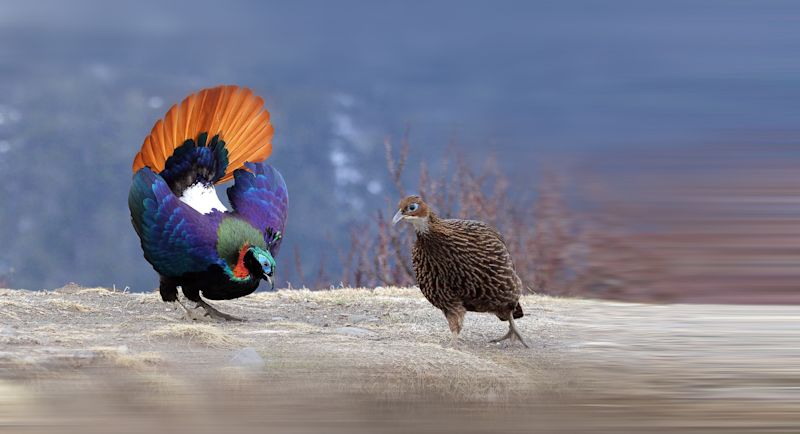Nestled in the heart of the Annapurna mountains, a subrange of the Himalayas, Fishtail Mountain is a sight to behold. Rising to 6,993 m (22,943 ft) above sea level, its double peak mimics the tail fin of a fish, making it a distinctive feature of the Annapurna skyline. This unique shape has given the mountain iconic status.
Is Fishtail the mountain’s real name?
Fishtail Mountain is actually called Machapuchare (also spelled Machhapuchchhre or Machhapuchhre) by locals. But this Nepali words translates as "fish's tail" in English. The mountain is consequently referred to as Fishtail by foreigners, as it's easier to remember.
Where is Fishtail Mountain?
Fishtail Mountain – or Mt Machapuchare – is nestled in the heart of the Annapurna massif. As such, it sits within the Annapurna Conservation Area, which is the largest protected region in Nepal. This area balances ecological preservation with sustainable tourism. Its success is a testament to effective conservation strategies and community involvement.
More specifically, the mountain lies at the head of the Modi Khola Valley. Anyone trekking to Annapurna Base Camp or doing the Annapurna Circuit trek will be rewarded with great views of Machapuchare.
Fishtail Mountain in morning sunlight
Local beliefs about Fishtail Mountain
To many locals, Machapuchare is more than just another mountain. It's a sacred site associated with Lord Shiva, one of the principal deities in Hinduism. In fact, locals often say that the god meditates at its peak.
Some Annapurna residents have even shared stories of mysterious lights or unusual phenomena around the peak, which they interpret as signs of divine activity.
Restrictions on climbing Fishtail Mountain
In an effort to preserve its sanctity, Machapuchare is off-limits to climbers. Locals believe that the mountain offers spiritual protection to the surrounding valleys and communities. It is thought that disturbing the peak could invite natural disasters or upset divine forces. Consequently, no one has ever reached its summit.
In 1957, a British expedition led by Jimmy Roberts was granted permission to climb Machapuchare, but the group stopped just short of the summit to honour its sacred status. Nepalese authorities have since prohibited further climbing expeditions to the peak.
This climbing restriction has ensured that the mountain remains untouched, which helps with its mystique as well as its pristine beauty.
Flora and fauna on Fishtail Mountain
Himalayan monals
The Annapurna region, including Machapuchare, boasts rich biodiversity. Numerous plant and animal species find refuge here. This natural diversity enhances the mountain’s ecological value, making it a key component of the region's environmental conservation.
Some of the animals that live within the Annapurna Conservation Area and so have been spotted on the slopes of Machapuchare include snow leopards, Himalayan tahrs, musk deer and Himalayan black bear. Birds you might find here include Himalayan monals, blood pheasants, bearded vultures and golden eagles.
Best time to visit Fishtail Mountain
To truly appreciate Machapuchare, timing is key. The pre-monsoon and post-monsoon seasons, from March to May and September to November, offer the best weather. This means clear skies, increasing your chances of seeing the summit. You can learn more in Best time trek the Annapurna Circuit.
Annapurna Fishtail Mountain, or Machapuchare, captivates locals and visitors alike with its blend of natural beauty, cultural significance and mystery.





